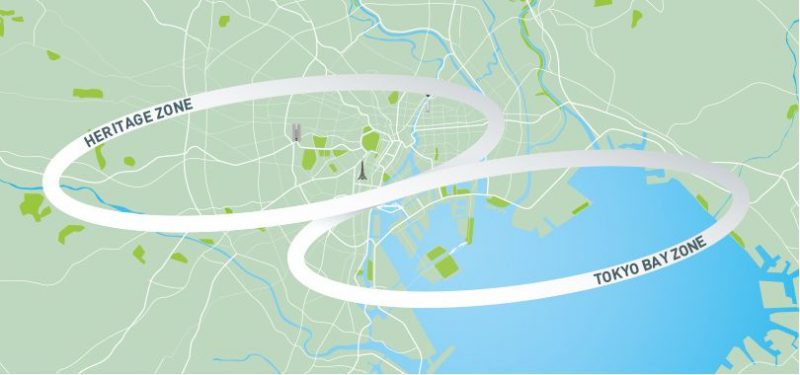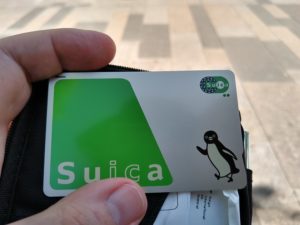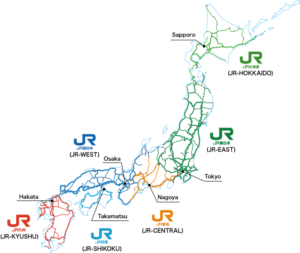This summer’s Tokyo Olympics and Paralympics are set to take place between July 23 – August 8. Spectators finally get to witness the 32nd modern Olympic Games a year overdue as Japan canceled last year’s event to cope with the pandemic, becoming the fourth cancelation in the game’s history. The Japanese government hopes to allow overseas tourists to enter Japan and explore the 2021 Tokyo Olympics, giving the economy a well-needed boost.
As of now, all 42 venues remain the same, including the press areas and athlete facilities. All venues are Tokyo-based and spread out into two zones – Heritage Zone and Tokyo Bay Zone.
Tokyo Olympic Venues

The Tokyo Olympics main venue will be the National Stadium in the Kasumigaoka district of Shinjuku Ward.
Here’s a list of all 42 venues:
- Olympic Stadium
- Tokyo Metropolitan Gymnasium
- Yoyogi National Stadium
- Nippon Budokan
- Imperial Palace Garden
- Tokyo International Forum
- Kokugikan Arena
- Ariake Arena
- Olympic Stadium
- Ariake Olympics Gymnastics Centre
- Olympic BMX Course
- Ariake Tennis Park
- Odaiba Marine Park
- Shiokaze Park
- Seaside Park Hockey Stadium
- Sea Forest Cross-Country Course
- Sea Forest Waterway
- Ariake Arena
- Canoe slalom venue
- Sapporo Dome
- Dream Island Archery Field
- Olympic Aquatics Centre
- Tokyo Tatsumi International Swimming Center
- Musashino Forest Sport Centre
- Tokyo Stadium
- Saitama Super Arena
- Asaka shooting Range
- Kasumigaseki Country Club
- Makuhari Messe International Convention Complex
- International Stadium Yokohama
- Enoshima Yacht Harbour
- Baji KoenIzu Velodrome
- Izu Mountain Bike Course
- Sapporo Dome
- Miyagi Stadium
- Saitama Stadium
- International Stadium Yokohama
- Olympic Village
- IBC/MPC Tokyo International Exhibition CenterTokyo Olympics
JR Pass: See the Olympic Games by Exploring Japan

If you’re one of the lucky ones traveling to Tokyo, then getting a
JR has two categories on offer – Ordinary and Green Class (first class). Both include unlimited travel, free seat reservations, and access to the high-speed Shinkansen bullet train. For those traveling with families, prices differ between adults (above 12) and kids (6-11). To save money, opting for the ordinary pass will get you around the country as intended. The Green Card pass allows for extra luggage room and seat space, so think about what best suits your trip.
Here’s a


Japan’s subway and metro system is handy for zooming around the city on short trips. For spectators traveling to and from venues, getting familiar with the routes will save time.
Your best bet for getting around Tokyo is to pick up a Suica Card as soon as you land. It’s a pre-paid pass, issued by JR, that serves train lines, subways, taxis, and even convenience stores. Its expiration date lasts only 28 days, so it’s super handy for short-term trips. Suica cards can be purchased at airports, train stations, or shipped to an overseas address. We all know the headache of carrying a million things at once when traveling, not to mention train tickets, so do yourself a favor with a Suica card.
The Yamanote Loop Line is within the Heritage Zone, going through central Tokyo. Once you are familiar with the layout, traveling through the city is pretty easy. All Tokyo Bay Zone venues are hosted in Odaiba – a human-made island only a monorail ride from the big city.
The first trains usually depart at 5.00 am, while the last trains are around midnight. FYI, plan during a night out in Tokyo; otherwise, you may land yourself with a hefty taxi fare!
Our UK and US readers will love this next part!
Signs appear in both Japanese and English. Announcements at train stations and in carriages also come in both languages.
Train lines are colored coordinated depending on each line (you will also see this on google maps). Often you will find colored lines on station floors to guide passengers to their correct platform. It’s no surprise Japan’s transport service is the most efficient in the world.
For Shinkansen trains, carriages are devoted to reserved and non-reserved passengers. You can reserve a seat at any JR ticket office or ticket machine. During busy periods like long weekends or public holidays, bullet trains are busy with families and tourists. Booking a seat at no extra cost will be worth every second.
Note: Some stations have dedicated ‘pushers’ on standby to wedge passengers in each carriage, so everyone gets to where they’re going, no matter how uncomfortable (or claustrophobic!). If possible, avoid rush hour times.
Here’s a layout of Tokyo’s metro lines. Once you get familiar with specific lines, it’s easy to get around even though it looks terrifying at first.
2021 Olympics: Japan’s New Light

Canceling last year’s Tokyo Olympics was detrimental to Japan’s economy. The delay cost between $2 – $6 billion as preparation began 8 years ago to host this historic event. 150,000 jobs were created through preparation for the games. Even an increase in English studies was reported to prepare for tourists coming overseas. However, given the current situation, the mere whisper of tourism in Japan seems like a crazy dream. Prime minister Yoshihide Suga has announced expanding a state of emergency set for Osaka, Kyoto, and Hyogo prefectures, extending beyond Tokyo. The announcement comes as no surprise as early January saw a national infection rate of 4,800, after a 6,000 daily cap the previous week.
Much criticism has come upon Suga’s government on their handling of Japan’s third wave. A recent survey showed 80% of people would prefer to have the games postponed again, to deal with Japan’s current covid outbreak.
Optimism is a factor for this year’s Olympics. With vaccines being introduced worldwide, clarity could be improved enough for health officials and the Japanese government to go ahead with the event. Reports show vaccines will commence in late February, but priority patients like health care workers and elderly residents will be first in line.
Tourists worldwide will also want to rekindle their traveling bug, but at the same time, safety is a concern. The upcoming months will be crucial for Japan. Safety regarding the general public, tourists(if allowed), and athletes will be a hurdle, not including hosting the world’s biggest sporting event.















































